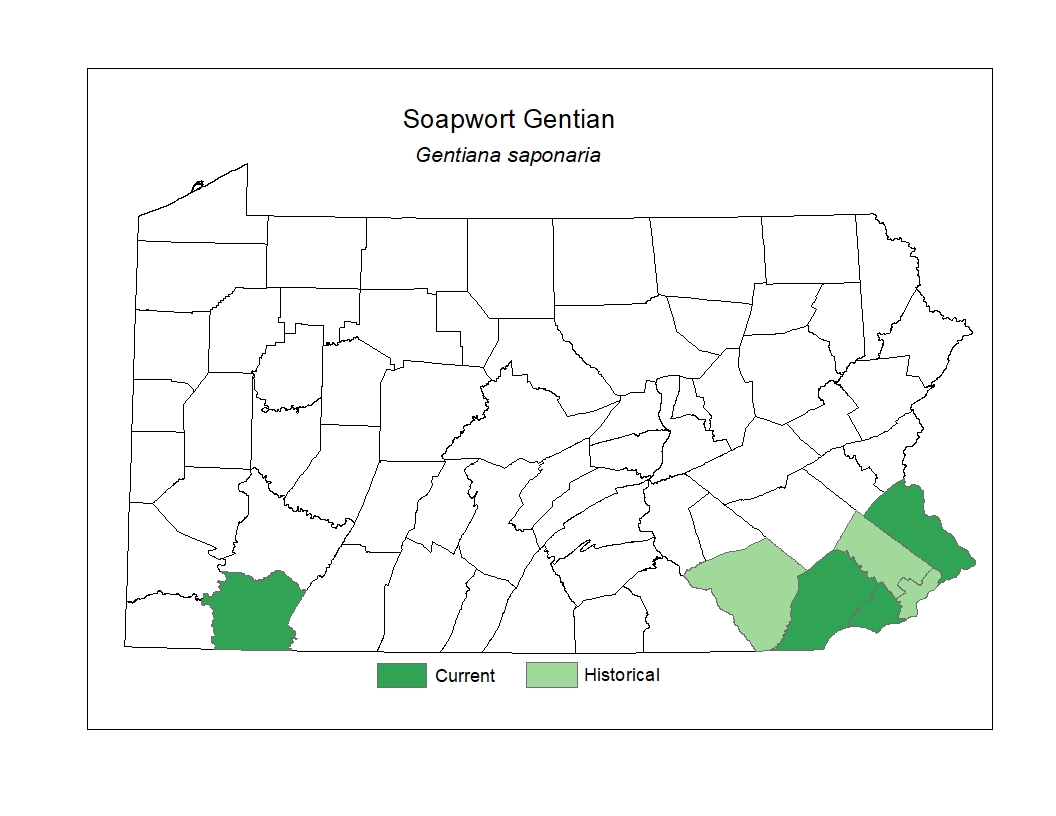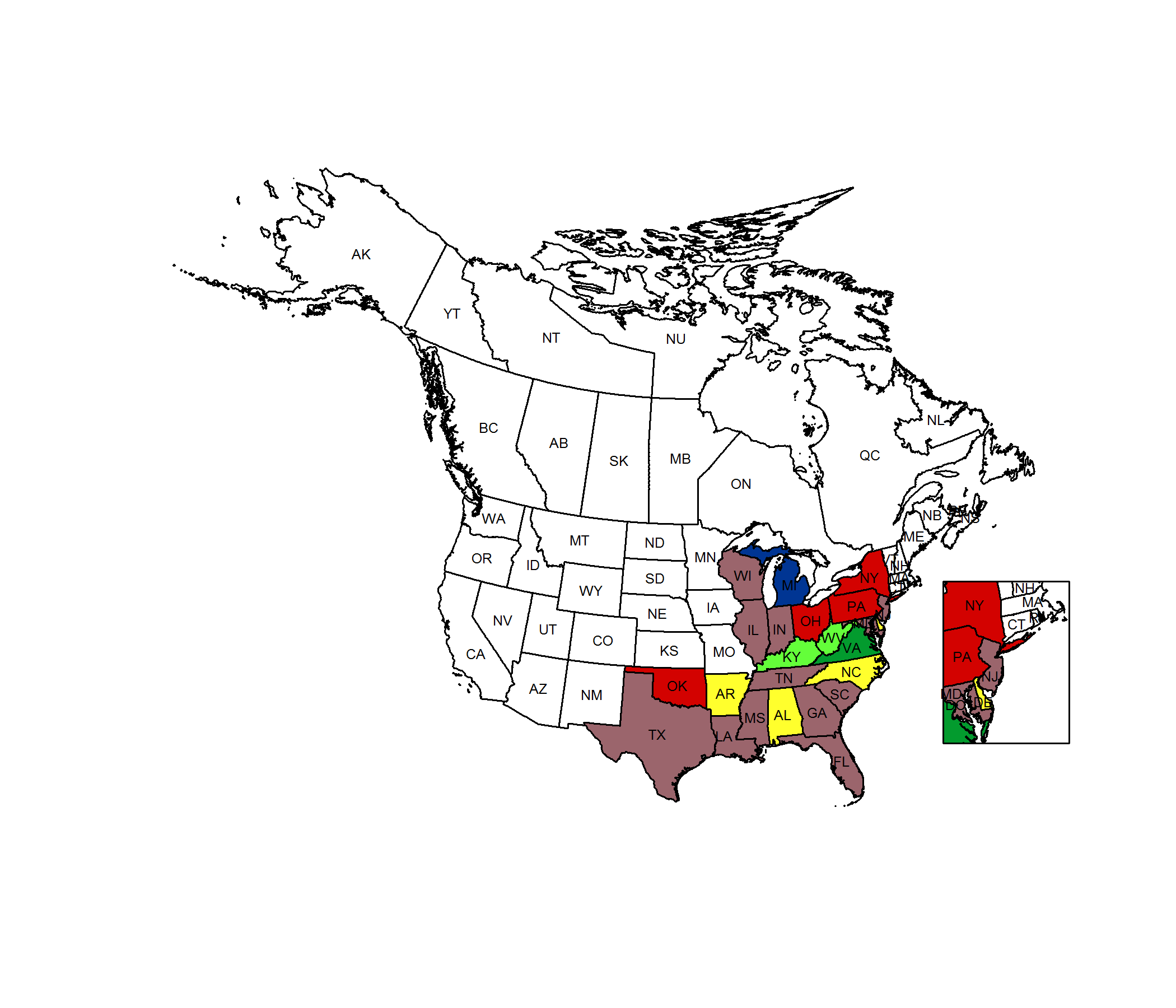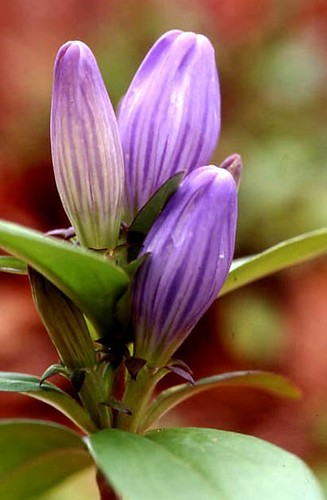 Species Factsheets
Species Factsheets
Gentiana saponaria
Soapwort Gentian
State Status: TU
PBS Status: Pennsylvania Endangered (PE)
Federal Status:
Global Rank: G5
![]() rank interpretation
rank interpretation
State Rank: S1S2
Description
Soapwort Gentian is an herbaceous perennial with a hairless stem that may grow to 60 cm in height. The leaves are oppositely arranged, without a well-developed stalk, elliptic in shape, untoothed and usually hairy on the margin, and to 7.5 cm in length and to 12 mm in width. The blue tube-like flowers, appearing in September and October, are about 4 cm in length and clustered at the top of the stem. The individual flowers, when unfolded, have 5 blue lobes that are united at their bases, but toward the flower tip are separated from each other by folds, or “plaits,” which contrast in color and texture with the lobes. In Soapwort Gentian, the plaits are slightly shorter (by 2 mm or less) than the lobes at the top of the flower, and have small teeth along their margin. The green calyx of the flower, located beneath the petal tube, is partly united at the base and has lobe-like tips that have marginal hairs. The fruit is pod-like and contains many seeds.
Rank Justification
Critically imperiled in the nation or state because of extreme rarity (often 5 or fewer occurrences) or because of some factor(s) such as very steep declines making it especially vulnerable to extirpation from the state.
Habitat
It grows in moist openings and clearings, open woods, utility rights-of-way, and swamps.
Survey Dates
Flowers September - October
Distribution
Soapwort Gentian ranges from New York to Wisconsin and south into Florida and Texas. In Pennsylvania, it has been documented historically mostly in the southeastern and southwestern counties.

Threats
Habitat loss and deer browse are threats in some locations.
Management
The viability of populations of Soapwort Gentian and its habitat often requires maintaining early successional conditions and controlling invasive species. Active management, such as periodic mowing or prescribed fire, may be needed to create the proper successional stage and ecological conditions for this species to thrive.
Conservation Status Map


NatureServe. 2017. NatureServe Explorer: An online encyclopedia of life [web application]. Version 7.1. NatureServe, Arlington, Virginia. Available https://explorer.natureserve.org.
- NatureServe. 2018. NatureServe Explorer: An online encyclopedia of life [web application]. Version 7.1. NatureServe, Arlington, Virginia. Available at https://www.natureserve.org/explorer
- Pennsylvania Natural Heritage Program. 2018.
- Rhoads, A.F. and W.M. Klein, Jr. 1993. The Vascular Flora of Pennsylvania. American Philosophical Society, Philadelphia, Pennsylvania. Rhoads, A.F. and T.A. Block.
- 2007. The Plants of Pennsylvania: An Illustrated Manual. 2nd edition. University of Pennsylvania Press, Philadelphia, Pennsylvania.







